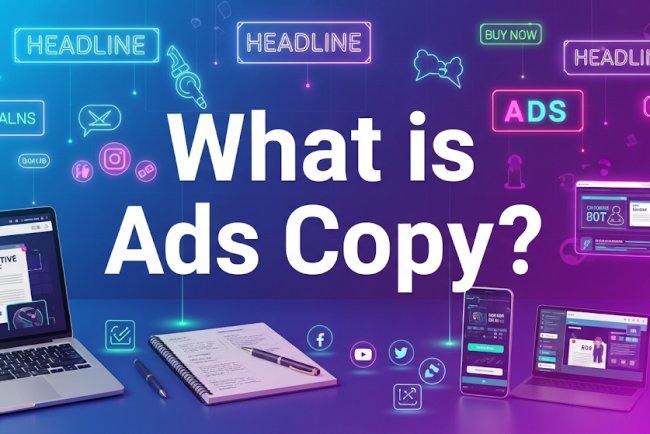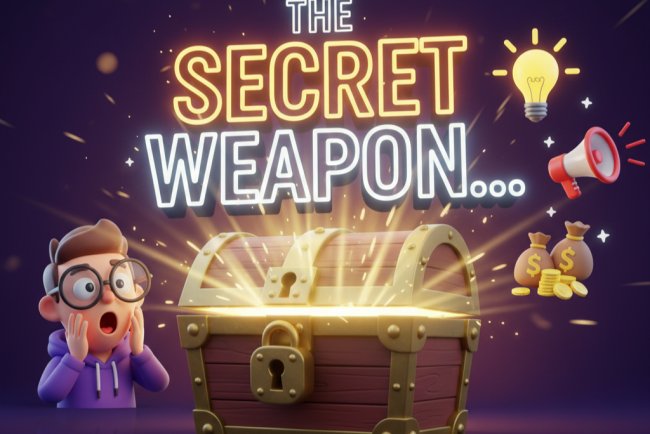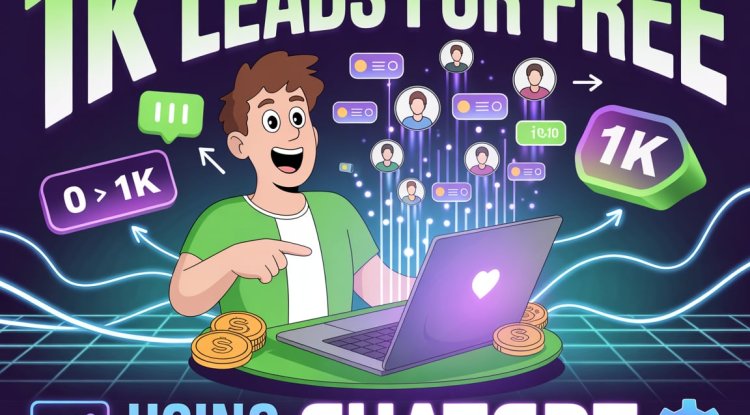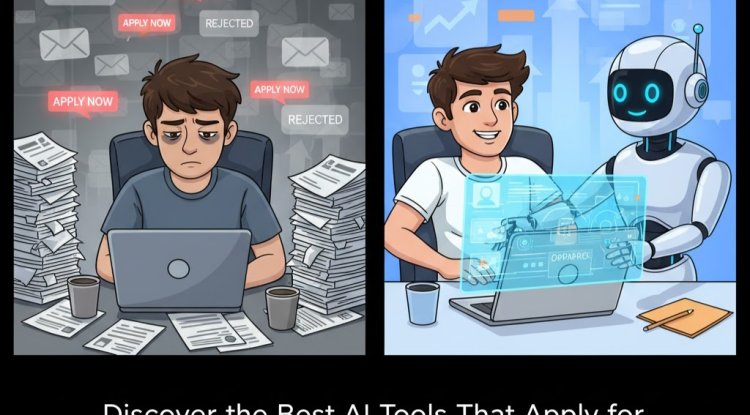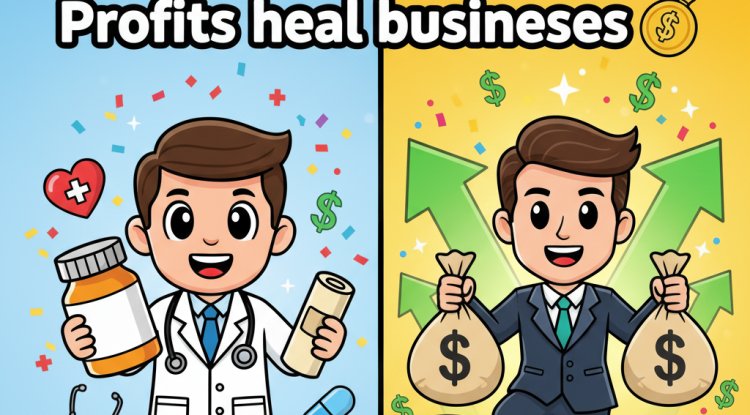What is Copy Writing ?
Learn copywriting fundamentals, proven formulas, and advanced techniques to write persuasive copy that converts. Complete guide for beginners and professionals.
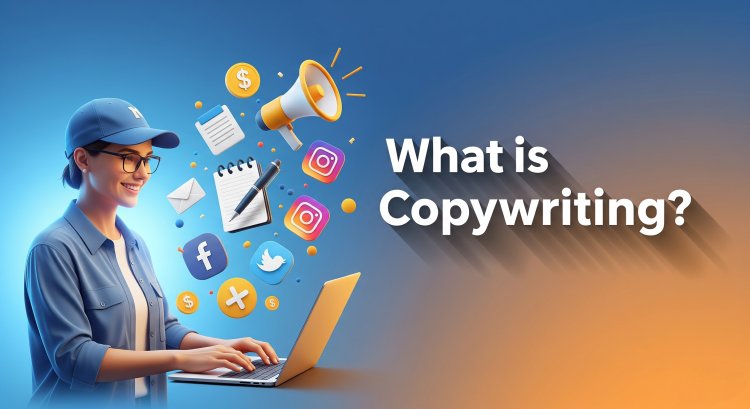
When One Word Changed Everything (And Made $2.4 Million)
Picture this: A struggling online retailer was losing money on every Facebook ad. Their conversion rate was dismal at 0.8%. Then, their copywriter changed just one word in their headline.
The result? Conversions jumped to 3.2% overnight – a 400% increase that generated an additional $2.4 million in revenue over six months.
That single word? They changed "Buy Now" to "Get Yours."
This isn't fiction. It's the raw power of copywriting – the difference between words that fall flat and words that compel action. In a world where the average person sees 5,000+ marketing messages daily, masterful copywriting isn't just helpful – it's the difference between thriving and disappearing into the noise.
Whether you're a business owner struggling to convert website visitors, an entrepreneur crafting your first sales page, or a marketing professional wanting to sharpen your persuasive writing skills, this guide will transform how you communicate with your audience.
What is Copywriting? (And Why It's Not What You Think)
Copywriting is the strategic art of writing words that persuade people to take specific actions. Unlike content writing, which focuses on informing or entertaining, copywriting has one primary goal: to move readers from curiosity to commitment.
Think of copywriting as your silent salesperson – working 24/7 to convince, convert, and close deals while you sleep.
The Psychology Behind Persuasive Writing
Great copywriting taps into fundamental human psychology. We make decisions based on emotion and justify them with logic. Effective copywriters understand this and craft messages that:
- Trigger emotional responses (fear of missing out, desire for transformation, need for belonging)
- Address subconscious objections before they become conscious roadblocks
- Create urgency without feeling manipulative
- Build trust through social proof and authority
Why Copywriting Dominates the Digital Age
In today's attention economy, you have approximately 3 seconds to capture someone's interest. Poor copy means:
- Visitors bounce from your website
- Emails go unread and unopened
- Social media posts get ignored
- Ads drain your budget without results
But strategic copywriting transforms these touchpoints into revenue generators.
Real-World Example #1: Dollar Shave Club's launch video script generated 26,000 new customers in just 48 hours, largely due to copywriting that was conversational, benefit-focused, and personality-driven.
Real-World Example #2: Basecamp's homepage copy "Organize your team's work" outperformed "Project management software" by 24% because it focused on the outcome (organization) rather than the category (software).
Real-World Example #3: A simple subject line change from "Newsletter" to "Your weekly dose of inspiration" increased email open rates from 12% to 31% for a lifestyle brand.
The Copywriting Fundamentals: Your Foundation for Success
Mastering copywriting starts with five core principles that separate amateur writers from persuasion professionals.
1. Know Your Audience (Like Your Best Friend)
Before writing a single word, you must deeply understand your target customer. Create detailed customer avatars that include:
Demographics: Age, income, location, job title Psychographics: Values, fears, aspirations, frustrations Behavioral patterns: Where they shop, what they read, how they make decisions
Practical Example: Instead of writing "Our software increases productivity," write "Finally, leave the office by 6 PM and make it to your daughter's soccer game" – because you know your audience values work-life balance.
2. The AIDA Formula: Your Copywriting Roadmap
Attention: Hook them with compelling headlines Interest: Keep them reading with relevant benefits
Desire: Make them want your solution Action: Tell them exactly what to do next
Example in Action:
- Attention: "The 5-Minute Marketing Strategy That Generated $100K"
- Interest: "Discover how a simple email sequence..."
- Desire: "Imagine having qualified leads contacting you daily..."
- Action: "Download your free template below"
3. Benefits vs. Features: The $1 Million Mistake
Features tell. Benefits sell. This single distinction separates successful copywriters from struggling ones.
Feature: "Our CRM has automated follow-up sequences" Benefit: "Never lose another potential customer because you forgot to follow up"
Feature: "All-natural ingredients" Benefit: "Feel confident about what you're putting in your family's bodies"
Pro Tip: For every feature you mention, ask "So what?" until you reach the emotional benefit that matters to your customer.
4. Emotional Triggers: The Psychology of Persuasion
Humans are driven by core emotions. Master copywriters leverage these psychological triggers:
Fear: "What happens if you don't secure your retirement by age 50?" Greed: "Double your income in 90 days" Pride: "Join the exclusive group of entrepreneurs who..." Belonging: "Thousands of small business owners trust us" Curiosity: "The simple trick billionaires use..."
5. Social Proof: Let Others Sell for You
People trust other people more than they trust companies. Incorporate:
- Customer testimonials with specific results
- Case studies showing transformation
- User-generated content and reviews
- Authority endorsements from industry experts
- Usage statistics ("Join 50,000+ satisfied customers")
Power Move: Include the customer's photo, full name, and company when possible. "Sarah J." carries far less weight than "Sarah Johnson, Marketing Director at TechFlow Solutions."
Essential Copywriting Formulas: Your Conversion Blueprints
Professional copywriters rely on proven formulas that consistently drive results. Here are seven battle-tested frameworks:
1. PAS (Problem, Agitate, Solution)
Problem: "Struggling to get quality leads for your business?" Agitate: "Every day you wait, your competitors are stealing potential customers. Those lost leads represent thousands in missed revenue." Solution: "Our lead generation system delivers 50+ qualified prospects monthly."
2. Before-After-Bridge (BAB)
Before: "You're working 70-hour weeks but barely making ends meet" After: "Imagine earning $10K/month working just 30 hours per week" Bridge: "Our proven system is the bridge between your current struggle and your dream lifestyle"
3. AIDA (Attention, Interest, Desire, Action)
Already covered above – the classic formula that never fails.
4. QUEST (Qualify, Understand, Educate, Stimulate, Transition)
Qualify: "Attention small business owners..." Understand: "We know you're tired of expensive marketing that doesn't work" Educate: "Here's why 90% of small business marketing fails..." Stimulate: "But when you apply this strategy..." Transition: "Ready to transform your marketing? Click here"
5. The 4 U's (Urgent, Unique, Ultra-specific, Useful)
Every great headline incorporates these elements: Urgent: "Today only" or "Limited time" Unique: "Never-before-revealed" or "Secret method" Ultra-specific: "Increase sales by 47%" not "boost sales" Useful: Clear benefit the reader will receive
6. PASTOR (Problem, Amplify, Solution, Transformation, Offer, Response)
Problem: Identify the core issue Amplify: Make the pain vivid and urgent Solution: Present your answer Transformation: Show the positive outcome Offer: Present your product/service Response: Clear call-to-action
7. The 5 W's + H Formula
Who, What, When, Where, Why, How – ensuring your copy answers all crucial questions readers have before they'll take action.
Types of Copywriting: Choose Your Specialty
Copywriting encompasses multiple specializations, each with unique challenges and income potential:
Sales Pages and Landing Pages
What: Long-form pages designed to convert visitors into customers Income Potential: $2,000-$15,000 per page Skills Needed: Persuasion psychology, A/B testing, conversion optimization
Email Marketing Sequences
What: Automated email series that nurture leads and drive sales Income Potential: $1,500-$8,000 per sequence Skills Needed: Storytelling, segmentation, deliverability knowledge
Social Media Ads
What: Short, punchy copy for Facebook, Instagram, LinkedIn, and other platforms Income Potential: $500-$3,000 per campaign Skills Needed: Platform-specific knowledge, visual collaboration, rapid iteration
Product Descriptions
What: Compelling descriptions that transform browsers into buyers Income Potential: $50-$200 per description Skills Needed: SEO optimization, benefit articulation, brand voice
Website Copy
What: Homepage, about pages, service descriptions that convert visitors Income Potential: $3,000-$20,000 per website Skills Needed: User experience understanding, brand messaging, SEO
Direct Mail
What: Physical mail pieces that drive response Income Potential: $2,000-$10,000 per campaign Skills Needed: Direct response principles, production knowledge, testing methodologies
Video Sales Letters (VSLs)
What: Scripts for sales videos that convert viewers into customers Income Potential: $5,000-$25,000 per VSL Skills Needed: Storytelling, pacing, visual collaboration
Pro Tip: Start with one specialization and master it before expanding. Specialists typically earn 2-3x more than generalists.
Copywriting Tools & Resources: Your Professional Toolkit
Research Tools
Google Trends: Identify trending topics and seasonal patterns AnswerThePublic: Discover questions your audience is asking Facebook Audience Insights: Understand demographics and interests Amazon Reviews: Mine for customer language and pain points Reddit/Quora: Find real conversations about your topic
Writing Tools
Grammarly: Grammar, spelling, and style suggestions Hemingway Editor: Improve readability and eliminate complex sentences CoSchedule Headline Analyzer: Optimize headlines for engagement Thesaurus.com: Find more compelling word choices Google Docs: Collaborate with clients and track changes
Testing Tools
Google Optimize: A/B test different copy versions Hotjar: See how users interact with your copy through heatmaps Unbounce: Build and test landing pages Mailchimp: Test email subject lines and content
Learning Resources
Books: "The Copywriter's Handbook" by Robert Bly, "Breakthrough Advertising" by Eugene Schwartz Courses: Copyhackers, AWAI (American Writers & Artists Institute) Communities: CopywritingCourse.com forum, Copywriter Collective Facebook group
Common Copywriting Mistakes (And How to Avoid Them)
Even experienced marketers fall into these traps. Recognizing them will instantly improve your copy:
Mistake #1: Writing Features Instead of Benefits
Wrong: "Our software has 127 features" Right: "Save 10 hours per week on administrative tasks"
Mistake #2: Using Jargon or Complex Language
Your copy should pass the "grandmother test" – if your grandmother wouldn't understand it, simplify it. Write at an 8th-grade level for maximum comprehension.
Mistake #3: Weak Headlines That Don't Grab Attention
80% of people read headlines, but only 20% read the rest. Your headline determines success or failure.
Weak: "Our Marketing Services" Strong: "How We Helped Local Restaurants Increase Revenue by 340% During the Pandemic"
Mistake #4: Missing or Unclear Call-to-Actions
Never assume people know what to do next. Make your CTA:
- Action-oriented: Use verbs (Download, Start, Get, Join)
- Specific: Tell them exactly what happens next
- Benefit-focused: "Get Your Free Template" vs. "Submit"
Mistake #5: Not Addressing Objections
Anticipate why people might hesitate and address those concerns proactively:
- Price objections: Show value and payment plans
- Time objections: Demonstrate quick results
- Skepticism: Provide guarantees and social proof
Mistake #6: Failing to Test and Optimize
Great copywriters test everything:
- Headlines
- Call-to-action buttons
- Email subject lines
- Value propositions
- Pricing presentation
Remember: Small improvements compound. A 2% increase in conversion rate can mean thousands in additional revenue over time.
Getting Started: Your 30-Day Copywriting Action Plan
Ready to begin your copywriting journey? Follow these seven steps:
Week 1: Foundation Building
Days 1-3: Study great copy examples. Visit high-converting websites like:
- Basecamp.com (clear, benefit-focused messaging)
- Dollar Shave Club (personality-driven copy)
- Slack.com (simple, powerful value propositions)
Days 4-7: Read "The Copywriter's Handbook" by Robert Bly and take notes on formulas and techniques.
Week 2: Practice With Personal Projects
Days 8-10: Rewrite your own website copy, email signatures, and social media bios using what you've learned.
Days 11-14: Create practice pieces: Write three different headlines for the same product, craft an email sequence for a fictional business, or improve existing marketing materials.
Week 3: Build Your Portfolio
Days 15-18: Create 3-5 sample pieces showcasing different copywriting types (email, sales page, social media ad).
Days 19-21: Offer to write copy for free for local businesses or nonprofits in exchange for testimonials and portfolio pieces.
Week 4: Start Your Professional Journey
Days 22-24: Join copywriting communities:
- Copywriter Collective (Facebook)
- r/copywriting (Reddit)
- Copy Chief (online community)
Days 25-28: Start pitching small projects on platforms like:
- Upwork or Fiverr (build initial experience)
- Local business networking groups
- Facebook groups for your target market
Days 29-30: Consider specialized training through AWAI, Copyhackers, or Copy School.
Additional Resources for Continued Growth
Books to Read Next:
- "Breakthrough Advertising" by Eugene Schwartz
- "Scientific Advertising" by Claude Hopkins
- "Influence" by Robert Cialdini
Websites to Follow:
- Copyblogger.com
- Copyhackers.com
- MarketingLand.com
Podcasts to Subscribe To:
- Copy That!
- The Copywriter Club Podcast
- Everyone Hates Marketers
Your Next Steps: Transform Words Into Wealth
Copywriting isn't just a skill – it's a superpower that transforms how you communicate, persuade, and ultimately, how much money your business makes.
The entrepreneurs and businesses thriving in today's competitive market all share one thing: they've mastered the art of persuasive communication. They know that the right words, in the right order, at the right time, can be worth millions.
You now have the roadmap. You understand the fundamentals, formulas, and psychology behind copywriting that converts. The question isn't whether copywriting works – it's whether you'll take action to implement what you've learned.
Your copywriting journey starts with a single sentence. What will yours be?
Ready to Master Copywriting? Get Your Free Toolkit
Don't let this knowledge gather digital dust. Take immediate action with our FREE Copywriting Starter Toolkit, including:
✅ The 10 Highest-Converting Headline Templates (fill-in-the-blank formulas)
✅ Email Sequence Swipe File (7 proven email templates)
✅ Copy Critique Checklist (ensure every piece converts before you publish)
✅ Customer Avatar Worksheet (know your audience better than they know themselves)
[Download Your Free Copywriting Toolkit Here]
Join 15,000+ entrepreneurs and marketers who are already using these templates to boost their conversions and grow their businesses.
Have questions about copywriting or want to share your success stories? Connect with our community of aspiring copywriters and share this article with someone who needs to master the art of persuasive writing.
What's Your Reaction?










